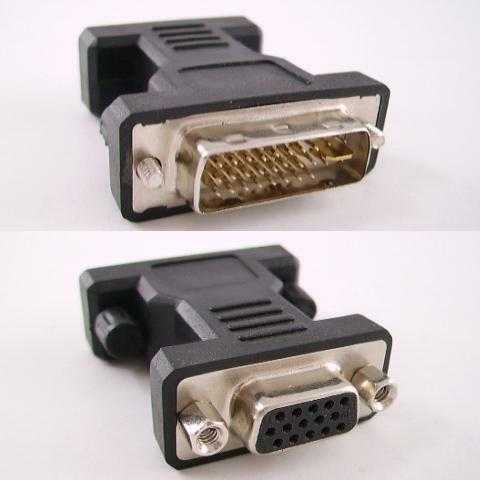5
1
I have an ASUS ENGT440/DI1GD5 video adapter which has three output ports: D-Sub (HD-15), DVI and HDMI. I am using both the D-Sub and DVI ports, but my main monitor is connected to the DVI output. Everything works fine except for which monitor is designated the console during boot.
The video adapter seems to prefer the D-Sub output for the console. When both the VGA and DVI monitors are connected, then the VGA monitor always becomes the console which displays the motherboard logo, POST information and booting progress. When only the DVI monitor is connected, then it becomes the console as desired.
How do I make the video adapter always use the DVI output (instead of the VGA port) for the console while booting?


Windows or Linux? – Diogo – 2012-06-28T11:47:38.520
Either system is fine, I have both. I haven't mentioned it in the question because I thought that this is beyond installed systems. – Igor Zinov'yev – 2012-06-28T12:42:58.717
The (text or graphics) mode of the video adapter is under the control of software (e.g. the OS). Depending on the mode, the software would write ASCII text or bit-mapped graphics to video memory. You have access to the X server in Linux; don't know about Windows. – sawdust – 2012-06-28T19:18:36.063
I probably should have stated that the video card uses the D-Sub output even when displaying the motherboard logo and the POST data. There's no system loaded at that point yet, just the BIOS. – Igor Zinov'yev – 2012-06-29T06:21:56.443
1The BIOS is software, so it displays the logo in graphics mode, and then switches the video mode to text for the POST data. Reading between the lines, you seem to be asking the wrong question. "Text mode" is irrelevant. Seems like the video adapter defaults to the VGA (aka D-sub or HD-15) port for the console when a VGA monitor is connected. The DVI port is the console only if there is no VGA monitor connected. You want the console on the DVI port even if the VGA is connected. Is that the issue you want to solve? – sawdust – 2012-06-29T08:46:01.287
Yes, that is the issue exactly. – Igor Zinov'yev – 2012-06-29T09:05:15.430
1
LOL, someone had the exact opposite problem as you: http://forums.gentoo.org/viewtopic-p-6795912.html . Some responders mention a "display auto-detect", and one of my PC's BIOS does have such an option (right after a SLI option), but both options are grey'd out. I have no idea what "display auto-detect" actually does. BTW I was able to duplicate your symptoms with a GeForce 8400.
– sawdust – 2012-06-30T05:14:13.303What is your motherboard? – Synetech – 2012-07-25T18:09:38.337
My motherboard is an ASUS P5Q PRO: http://www.asus.com/Motherboards/Intel_Socket_775/P5Q_PRO/
– Igor Zinov'yev – 2012-07-26T08:13:53.847@IgorZinov'yev: This might sound like a stupid question, but which PCI-E slot do you have the card plugged into, the blue one or the black one? – rishimaharaj – 2012-07-26T14:59:46.590
@rishimaharaj Does it make a difference? It's plugged in the blue one, i.e., the top one if you put the motherboard into a tower case. – Igor Zinov'yev – 2012-07-26T15:25:39.663
1
@IgorZinov'yev: Yes, usually the black one is slower than the blue one: ...unless in crossfire mode the black will run at 4X and the blue will run at 16X.
– rishimaharaj – 2012-07-26T15:46:27.437